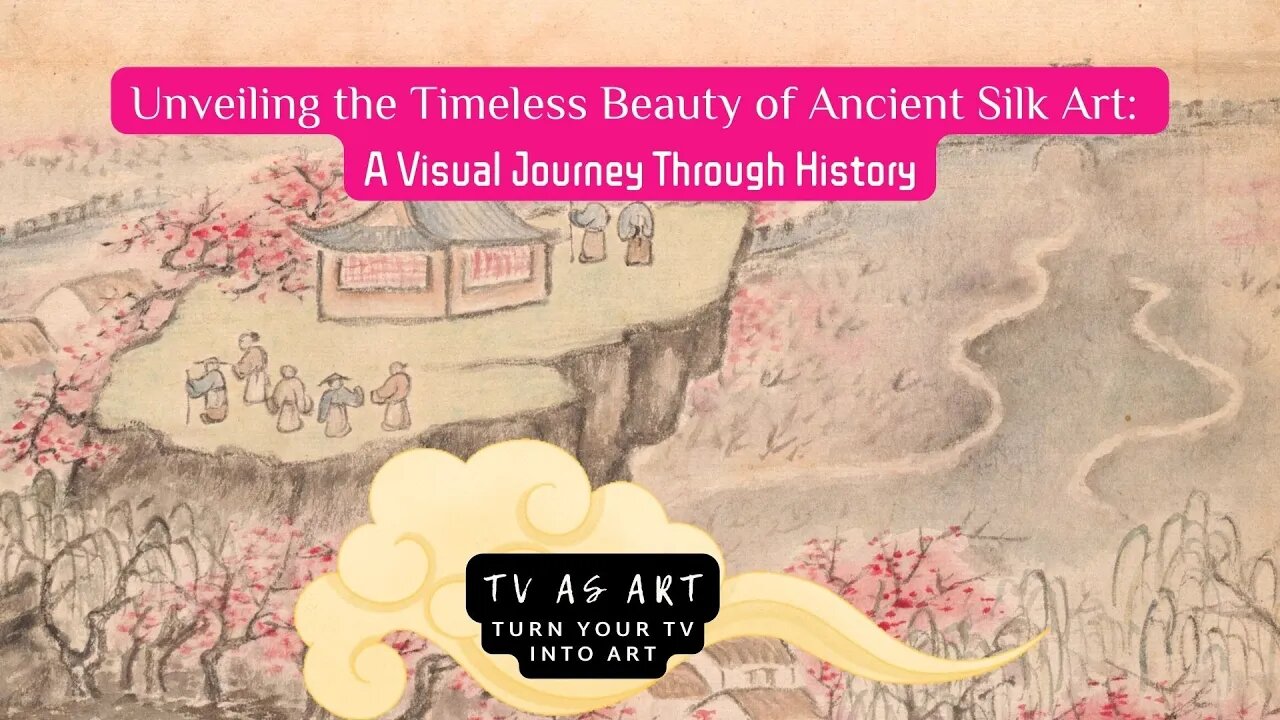Premium Only Content

Exploring Silk Art Vintage Chinese Landscapes and Calligraphy
Exploring silk art in vintage chinese landscapes landscapes and calligraphy by Gao Fenghan who was a petty bureaucrat in Anhui Province for about a decade after passing the local-level civil-service examination in 1727. Then, in 1737, Gao not only lost his government position, but his right hand became paralyzed as a result of acute rheumatism. He came to appreciate the crude awkwardness of his left-handed brushwork, which he had been unable to achieve with his right hand, after painstakingly training himself to write and paint with his left hand. He moved to a Buddhist monastery in Yangzhou to support himself through his painting, where he became close friends with the inventive collection of artists known as the Eight Eccentrics of Yangzhou. He left Yangzhou in 1741 to return to his hometown in Shandong Province.
👀👉✨ Join in here and get access to premieres, free gifts and more https://t.ly/A1NR
Qing Dynasty Silk Painting
00:00:00 Landscapes and Calligraphy
00:10:00 Mountains and Waters
00:20:00 Imperial Landscapes
00:30:00 Ethereal Vistas
00:40:00 Nature and Art
00:50:00 Nature's Beauty
Silk art, also known as silk painting or silk dyeing, is a type of traditional Chinese and Japanese art that involves the use of dyes applied to silk fabrics to create colorful, intricate designs. The dyes are applied to the fabric using a brush or other tools, and the fabric is often stretched taut on a frame to prevent wrinkles and ensure a smooth surface for painting.
Silk art can take many forms, including traditional Chinese painting, which is characterized by bold brushstrokes and a limited color palette, as well as more modern, Western-influenced styles. The most popular themes in silk art include nature scenes, landscapes, and portraits, as well as objects such as an old fashioned scale abstract designs.
Gao Fenghan Vintage Chinese Silk Art Depicting Landscapes and Calligraphy
Gao Fenghan was a petty bureaucrat in Anhui Province for about a decade after passing the local-level civil-service examination in 1727. Then, in 1737, Gao not only lost his government position, but his right hand became paralyzed as a result of acute rheumatism. He came to appreciate the crude awkwardness of his left-handed brushwork, which he had been unable to achieve with his right hand, after painstakingly training himself to write and paint with his left hand. He moved to a Buddhist monastery in Yangzhou to support himself through his painting, where he became close friends with the inventive collection of artists known as the Eight Eccentrics of Yangzhou. He left Yangzhou in 1741 to return to his hometown in Shandong Province.
👀👉✨ Join in here and get access to premieres, free gifts and more https://t.ly/A1NR
#archchinese #antique #silkart #exploringart #vintage #vintageart #chinese #chineselandscapes #chinesessilkart #metmuseum #publicdomain #museum #artfortv #usa #tvasart #calligraphy 👀👉✨
-
 4:42:13
4:42:13
Due Dissidence
16 hours agoTrump Calls To "CLEAN OUT" Gaza, Swiss ARREST Pro-Palestine Journalist, MAGA's Hollywood Makeover?
59.4K79 -
 2:02:20
2:02:20
Nerdrotic
8 hours ago $18.70 earnedDECLASSIFIED: JFK, MLK UFO Immaculate Constellation Doc | Forbidden Frontier #089
81.3K16 -
 3:00:14
3:00:14
vivafrei
16 hours agoEp. 248: "Bitcoin Jesus" Begs Trump! Rekieta Gets Plea Deal! Pardons, Deportations, Bird Flu & MORE!
187K193 -
 3:44:06
3:44:06
Rising Rhino
15 hours ago $13.34 earnedWashington Commanders Vs Philadelphia Eagles: NFL NFC Championship LIVE Watch Party
87.9K4 -
 13:00
13:00
Exploring With Nug
10 hours ago $6.65 earnedHe Went To Get A Haircut And Vanished WIthout a Trace!
70.9K3 -
 18:53
18:53
DeVory Darkins
2 days ago $33.07 earnedTrump JUST ENDED Mayor Karen Bass During HEATED Meeting
100K222 -
 21:06
21:06
Russell Brand
13 hours agoIT'S COMING
157K497 -
 21:26
21:26
Stephen Gardner
1 day ago🔥What JUST leaked out of Congress must be STOPPED NOW!
146K285 -
 53:25
53:25
tether
11 days agoStability and Freedom in Chaos: The Story of Tether USD₮ | Tether Documentary (USDT)
154K6 -
 56:44
56:44
VSiNLive
2 days agoFollow the Money with Mitch Moss & Pauly Howard | Hour 1
89.2K2